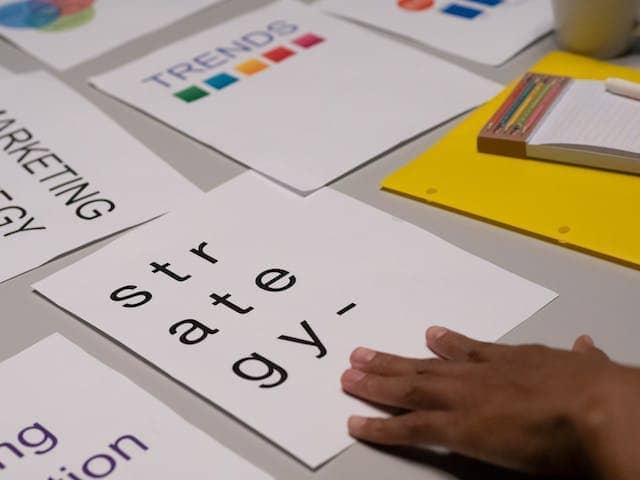Copyright Infringement: What to Do if You’re Accused

Copyright infringement is always in the news. A few cases in point:
- Taylor Swift and her hit “Shake It Off” will face trial in a suit brought by the writers of a girl group’s 2001 song “Playas Gon’ Play.”
- Khloe Kardashian’s fashion brand Good American has been sued by a photography company claiming that Kardashian’s Instagram post of a specific photo of model Bella Hadid violated its copyright.
- Musician Eric Clapton won his copyright claim in Germany over a woman who sold one of his bootleg CDs for $11 on eBay.
- Miramax won a copyright lawsuit against the photographer of an iconic poster for ‘Pulp Fiction.’
Tales of copyright infringement invariably include dramatic and intriguing backgrounds that captivate the imagination and generate outrage on both sides of the dispute. However, copyright isn’t a sword to use for personal gain. It’s supposed to be a shield to defend creative work and encourage artists and creative workers to put the fruits of their labors out into the market, free of worry that others might try to capitalize on their hard work.
But what if it happens to you? What if you’re the one accused of copyright infringement? What should you do then?
Getting down to basics: U.S. copyright law
First, it’s a good idea to make sure you have a basic understanding of U.S. copyright law, including your obligations as a content publisher or creator. Whether you’re publishing a personal blog, a social media account for a larger brand, or the content marketing for a company, you could be subject to copyright laws, so it’s important to know what your obligations and rights are.
What does copyright protect?
The U.S. Copyright Office publishes circulars that explain what kinds of rights copyright protects, who can claim a copyright interest and for how long, and how the copyright holder can protect those rights.
Copyright law protects any “original works of authorship as soon as an author fixes the work in a tangible form of expression.” Despite the use of the word “authorship,” copyright doesn’t just protect written text. It also covers blog posts, photographs, digital images, music, paintings, computer code and more.
Copyright does not protect ideas, systems, any work that hasn’t been reduced to a tangible form, titles, familiar designs or symbols, or mere ornamentation.
Who holds the copyright?
Copyright ownership immediately vests in the person who created the work in question, or in the employer who hires out for creative work. So if you wrote a viral blog post on your personal blog or site, you’re the copyright owner for that post. However, if you wrote the post for a brand as a freelance content marketing writer, most likely this is deemed a work for hire and the copyright would vest in the brand.
What rights does a copyright holder enjoy?
Think of copyright as a bundle of sticks. Each stick represents a specific right to the work in question. Unless you negotiate away or sell one or more of those rights, they all belong to the original author (or the brand that contracted it as a work for hire):
- Sell the work
- Display, perform, or produce it publicly
- Make copies of the work
- Create works that derive from the work (i.e., sequels, prequels, etc.)
How does a work become protected under copyright law?
As soon as the work is created and reduced to some kind of fixed form, it becomes protected by copyright law. When you take the picture, turn it into a digital file, write the blog post, or paint the painting, assuming the work is original to you, then you become the author and copyright owner.
To enhance the protection provided by copyright law, you can register the work with the U.S. Copyright Office. While that’s not necessary in order for the copyright to become valid, registration is necessary if you want to enforce those rights through a lawsuit. Registration also permits you to seek monetary damages and attorney’s fees.
How does a copyright holder enforce a copyright against an infringement?
A copyright infringement occurs whenever a person or brand reproduces or publishes someone else’s copyright-protected work without permission. Generally speaking, the copyright holder starts with a cease and desist letter sent to the infringer. They may request monetary damages, an explicit provision of credit to the copyright holder, removal of the infringing work, or other remedies.
If the parties can’t agree to a resolution through correspondence, the copyright holder may file a lawsuit in the appropriate federal district court. If the copyright holder prevails in court, the person who infringed the copyright might have to pay statutory damages as well as attorney’s fees.
What kinds of defenses can be asserted against a copyright infringement claim?
If you’re facing a claim of copyright infringement, you may have one or more defenses you can successfully use to defeat the claim in court. Among the most common defenses are the following:
- The period during which the copyright holder can sue (the statute of limitations) has expired;
- The copyright owner licensed the work to you or otherwise gave you permission to use it;
- You created the work in question independently, without copying it from the original work;
- You used the work in what’s called “fair use,” typically by parodying or critiquing the original work.
Busting copyright myths
You might hear or read a number of questionable assertions about copyright law and protection. Some of the most common myths include:
- “There’s no © symbol”: None is needed. The work is always protected by copyright the minute it’s created and fixed in some form. It’s a good idea to include a copyright notice on any reproducible work or file but it’s not necessary.
- “I found it on the web” or “I got it from Google images”: Frequently offered as a defense to copyright infringement claims on digital photographs, neither of these assertions offer any protection. You still need to get permission or a license from the copyright holder before publishing those images in your content. Finding it on the web doesn’t mean anyone can use it.
- “I didn’t make any money off it”: Whether you made money off the copyright-protected work might impact how much you’ll owe in damages, but if you didn’t make any money, that doesn’t mean you didn’t infringe on the copyright holder’s interests. It might help persuade a judge in a “fair use” defense, though.
- “I deleted it”: That’s great, and sometimes that’s all a copyright holder wants you to do. But that doesn’t mean you didn’t infringe their copyright for the period of time you published it on your site. You could still be held liable, though immediately deleting it from your site tends to suggest your good faith, which can go a long way with a judge.
When someone accuses you of copyright infringement
Content marketing creators and publishers are sometimes targeted with claims of copyright infringement. Some of those claims are bogus, but many are not. It usually takes place in the context of written content copied from other brands’ white papers, blog posts, and articles and of digital images. Your first notice may come through your website or through email, and it will take the form of a cease and desist letter, or an informal prelude to one. In either event, it’s important to respond appropriately and in a timely manner.
What not to do
First things first:
- Don’t panic. It’s absolutely something you should take seriously, but it’s not the end of the world. It’s the start of a process you’ll need to manage and it’s much easier to do that when you’re not hyperventilating.
- Don’t respond too quickly. Gather your thoughts and review the production path for the content in question. Take your time to craft a thoughtful, defensible response.
- Don’t ignore it. “Out of sight, out of mind” will not make the claims go away, even if the claims seem silly or untrue to you.
Instead, take a deep breath and get proactive with the following steps.
Preserve the evidence
- Identify the intellectual property (IP) in question. Take screenshots of everything, both in your CMS backend and any front-facing or publicly available pages or files.
- Review your documentation. Gather and collect all the relevant research, drafts, emails to creators, entries in project management software, notes and other associated documents, whether paper or digital, and review them to become familiar with the chain of production. It’s especially helpful to highlight where the offending material — the asserted quote or image, for example — came into the piece and how it got there.
Investigate the claim
Next, put yourself on both sides of the claims. Try to first prove and then disprove the allegations:
- Did you or your company publish the allegedly protected work for your or its own use?
- Where did that protected work come from? How did you find it, gain access to it, copy it, and bring it into your own work?
- Are you satisfied that the person who wrote to you about the infringement actually owns the work in question? (You can search for this information using the copyright public records portal.)
- Did you get permission to use it and can you document that permission? This might be in the form of a Creative Commons or other kind of license, explicit permission granted through an exchange of emails, a website granting free and public use, etc.
- Was the use intentional or inadvertent?
Think about potential defenses
Of the listed defenses above, think about what might apply to your case. Perhaps your piece is a commentary on the original, in which the fair use doctrine may apply. Creative works also fall out of copyright due to the passage of time. If the work is now in the public domain, it’s perfectly permissible to make derivative works or incorporate it into your own. Or perhaps it’s a factual statement or condition, an idea, a process, a title, or some other formulation that isn’t entitled to copyright protection in the first place.
Find a good IP lawyer
Finally, hire a seasoned IP lawyer in your area and let the lawyer respond. Your job is to assist and support the attorney by providing evidence and factual support for your position. The attorney is best equipped to write the actual response to the cease and desist. Further, if correspondence fails and litigation ensues, your attorney will already be familiar with your case and ready to defend you in court. Find a qualified copyright lawyer near you through the following methods:
- Ask colleagues in your state or area for referrals.
- Call your state bar association. Many will maintain a list of lawyers for referrals.
- Use a web-based directory site such as Avvo or Thumbtack.
The best defense is a good offense
To prevent being put through the copyright wringer in the first place, adopt content policies and editorial calendars that minimize the risk of encountering protected works. Use CC-only image sites and provide proper attribution to the artist. Include the obligation to produce original work only in all your freelance content creator contracts (and make sure you have contracts for each of them).
Build in checks and reviews prior to publication to avoid accidental infringement. Commit to producing wholly original or fully licensed content, whether created in-house or with freelancers, and you’ll go a long way toward avoiding those C&D letters in the first place.
Thanks for reading! Do you want to create thought leadership articles like the one above? If you struggle to translate your ideas into content that will help build credibility and influence others, sign up to get John’s latest online course “Writing From Your Voice” here.



